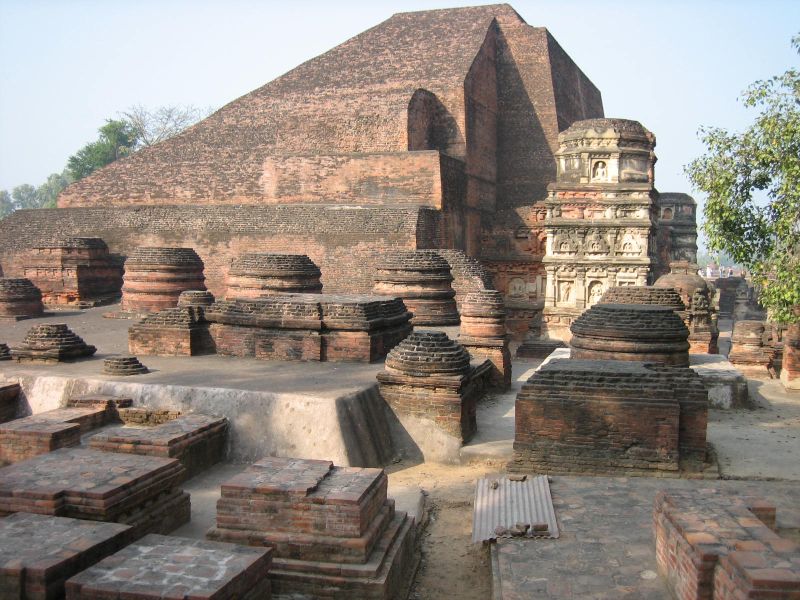|
Egil Øyjord
Egil Øyjord ( Mo i Rana, 31 August 1928 – Ås, 10 February 2021) was a Norwegian professor emeritus at the Norwegian University of Life Sciences, who in 1964 founded the International Association on Mechanization of Field Experiments (IAMFE). He was president of IAMFE for 36 years. The main objective of the association is to inform agronomists and plant breeders about new machinery, equipment, and instruments to increase the capacity and accuracy of their experimental work. Øyjord worked with the construction of machinery and equipment for the mechanization of field experiments. Øyjord invented the interchangeable distributor heads in 1965. This made the Øyjord plot seeders to a world article with export to 57 countries. In 2003 he received the King's Medal of Merit in Gold for his work for developing and manufacturing the world's first plot seeders for seeding of multiple rows of one variety.The Royal House of Norway (in Norwegian)http://www.kongehuset.no(Accessed 19 Aug ... [...More Info...] [...Related Items...] OR: [Wikipedia] [Google] [Baidu] |
Mo I Rana
Mo i Rana () is a List of towns and cities in Norway, city, and the administrative centre of the Municipalities of Norway, municipality of Rana, Norway, Rana, in Nordland county, Norway. It is located in the Helgeland region of Nordland, just south of the Arctic Circle. Some of the city's suburbs include Båsmoen and Ytteren in the north, Selfors in the east, and Åga/Hauknes/Dalsgrenda in the south. The name "Mo i Rana" (English: ''Mo in Rana, Norway, Rana'') distinguish it from other places named Mo (other)#Places, Mo (including the town of Mosjøen, also located in Helgeland). The city's postal address was "Mo 8600" until 1999, when it was changed to "Mo i Rana 8600". Today, the postal address is "8622 Mo i Rana". The city has a population (2018) of 18,866 and a population density of . This makes it the largest city in Helgeland, and the second largest city (after Bodø (town), Bodø) in Nordland county. Name Directly translated, the name ''Mo i Rana'' means "Mo in ... [...More Info...] [...Related Items...] OR: [Wikipedia] [Google] [Baidu] |
Ås, Viken
Ås is a municipality in former Akershus now Viken county, Norway. It is part of the Follo traditional region. The administrative centre of the municipality is the village of Ås. The parish of ''Aas'' was established as a municipality on 1 January 1838 (see formannskapsdistrikt). Ås is one of the fastest-growing municipalities in Akershus, with a population of 20,652 in 2020, and an increase of 539 in 2008. Ås is the largest agricultural municipality of Akershus, and home to the Norwegian University of Life Sciences and the amusement park Tusenfryd. General information Etymology The parish was named after the old ''Ås'' ( Norse ''Áss'') farm, since the first church was built there. The name is identical with the word ''áss'' meaning "hill", "ridge" or "esker" (height in moraine landscape). Prior to 1921, the name was spelled ''Aas''. Coat-of-arms The coat-of-arms is from modern times. They were granted on 23 July 1982. The three silver diamonds are a symbol for the ... [...More Info...] [...Related Items...] OR: [Wikipedia] [Google] [Baidu] |
Norwegian University Of Life Sciences
The Norwegian University of Life Sciences ( no, Norges miljø- og biovitenskapelige universitet, NMBU) is a public university located in Ås, Norway. It is located at Ås in Viken, near Oslo, and at Adamstuen in Oslo and has around 5,200 students. History The institution was established in 1859 as the Higher Agricultural College (''Den høiere Landbrugsskole''). In 1897 the institution was transformed into the Norwegian College of Agriculture (''Norges Landbrugshøiskole'', later spelled ''Norges Landbrukshøiskole'', ''Norges landbrukshøyskole'' and ''Norges landbrukshøgskole'', abbreviated NLH). It received the status of a university-level college (''vitenskapelig høgskole''). In 2005 it received university status and was renamed the Norwegian University of Life Sciences (''Universitetet for miljø- og biovitenskap''; UMB). In 2014 the it merged with the Norwegian School of Veterinary Science (NVH) in Oslo; it retained its English name but was formally renamed ''Norges m ... [...More Info...] [...Related Items...] OR: [Wikipedia] [Google] [Baidu] |
King's Medal Of Merit
The King's Medal of Merit (Norwegian: ''Kongens fortjenstmedalje'') is a Norwegian award. It was instituted in 1908 to reward meritorious achievements in the fields of art, science, business, and public service. It is divided in two classes: gold and silver. The medal in gold is rewarded for extraordinary achievements of importance to the nation and society. The medal in silver may be awarded for lesser achievements. The medal is suspended from a ribbon in the colours of the Royal Standard of Norway. The medal in gold is ranked eighth in the ranking of Norwegian orders and medals. The medal in silver is ranked 11th. Design of the Medal * The obverse shows the head of the reigning Monarch with name and motto. To date (2015) there have been three versions: Haakon VII (1908–1957), Olav V (1957–1991), and Harald V (since 1991). * The reverse bears a wreath and the words "KONGENS FORTJENSTMEDALJE" (Royal Medal of Merit) with the recipient's name engraved in the middle of the wreat ... [...More Info...] [...Related Items...] OR: [Wikipedia] [Google] [Baidu] |
1928 Births
Nineteen or 19 may refer to: * 19 (number), the natural number following 18 and preceding 20 * one of the years 19 BC, AD 19, 1919, 2019 Films * ''19'' (film), a 2001 Japanese film * ''Nineteen'' (film), a 1987 science fiction film Music * 19 (band), a Japanese pop music duo Albums * ''19'' (Adele album), 2008 * ''19'', a 2003 album by Alsou * ''19'', a 2006 album by Evan Yo * ''19'', a 2018 album by MHD * ''19'', one half of the double album ''63/19'' by Kool A.D. * ''Number Nineteen'', a 1971 album by American jazz pianist Mal Waldron * ''XIX'' (EP), a 2019 EP by 1the9 Songs * "19" (song), a 1985 song by British musician Paul Hardcastle. * "Nineteen", a song by Bad4Good from the 1992 album '' Refugee'' * "Nineteen", a song by Karma to Burn from the 2001 album ''Almost Heathen''. * "Nineteen" (song), a 2007 song by American singer Billy Ray Cyrus. * "Nineteen", a song by Tegan and Sara from the 2007 album '' The Con''. * "XIX" (song), a 2014 song by Slipk ... [...More Info...] [...Related Items...] OR: [Wikipedia] [Google] [Baidu] |
2021 Deaths
This is a list of deaths of notable people, organised by year. New deaths articles are added to their respective month (e.g., Deaths in ) and then linked here. 2022 2021 2020 2019 2018 2017 2016 2015 2014 2013 2012 2011 2010 2009 2008 2007 2006 2005 2004 2003 2002 2001 2000 1999 1998 1997 1996 1995 1994 1993 1992 1991 1990 1989 1988 1987 See also * Lists of deaths by day The following pages, corresponding to the Gregorian calendar, list the historical events, births, deaths, and holidays and observances of the specified day of the year: Footnotes See also * Leap year * List of calendars * List of non-standard ... * Deaths by year {{DEFAULTSORT:deaths by year ... [...More Info...] [...Related Items...] OR: [Wikipedia] [Google] [Baidu] |
People From Mo I Rana
A person ( : people) is a being that has certain capacities or attributes such as reason, morality, consciousness or self-consciousness, and being a part of a culturally established form of social relations such as kinship, ownership of property, or legal responsibility. The defining features of personhood and, consequently, what makes a person count as a person, differ widely among cultures and contexts. In addition to the question of personhood, of what makes a being count as a person to begin with, there are further questions about personal identity and self: both about what makes any particular person that particular person instead of another, and about what makes a person at one time the same person as they were or will be at another time despite any intervening changes. The plural form " people" is often used to refer to an entire nation or ethnic group (as in "a people"), and this was the original meaning of the word; it subsequently acquired its use as a plural f ... [...More Info...] [...Related Items...] OR: [Wikipedia] [Google] [Baidu] |
Academic Staff Of The Norwegian College Of Agriculture
An academy (Attic Greek: Ἀκαδήμεια; Koine Greek Ἀκαδημία) is an institution of secondary or tertiary higher learning (and generally also research or honorary membership). The name traces back to Plato's school of philosophy, founded approximately 385 BC at Akademia, a sanctuary of Athena, the goddess of wisdom and skill, north of Athens, Greece. Etymology The word comes from the ''Academy'' in ancient Greece, which derives from the Athenian hero, ''Akademos''. Outside the city walls of Athens, the gymnasium was made famous by Plato as a center of learning. The sacred space, dedicated to the goddess of wisdom, Athena, had formerly been an olive grove, hence the expression "the groves of Academe". In these gardens, the philosopher Plato conversed with followers. Plato developed his sessions into a method of teaching philosophy and in 387 BC, established what is known today as the Old Academy. By extension, ''academia'' has come to mean the accumulation, de ... [...More Info...] [...Related Items...] OR: [Wikipedia] [Google] [Baidu] |
Academic Staff Of The Norwegian University Of Life Sciences
An academy (Attic Greek: Ἀκαδήμεια; Koine Greek Ἀκαδημία) is an institution of secondary or tertiary higher learning (and generally also research or honorary membership). The name traces back to Plato's school of philosophy, founded approximately 385 BC at Akademia, a sanctuary of Athena, the goddess of wisdom and skill, north of Athens, Greece. Etymology The word comes from the ''Academy'' in ancient Greece, which derives from the Athenian hero, ''Akademos''. Outside the city walls of Athens, the gymnasium was made famous by Plato as a center of learning. The sacred space, dedicated to the goddess of wisdom, Athena, had formerly been an olive grove, hence the expression "the groves of Academe". In these gardens, the philosopher Plato conversed with followers. Plato developed his sessions into a method of teaching philosophy and in 387 BC, established what is known today as the Old Academy. By extension, ''academia'' has come to mean the accumulation, dev ... [...More Info...] [...Related Items...] OR: [Wikipedia] [Google] [Baidu] |



_1938.jpg)

